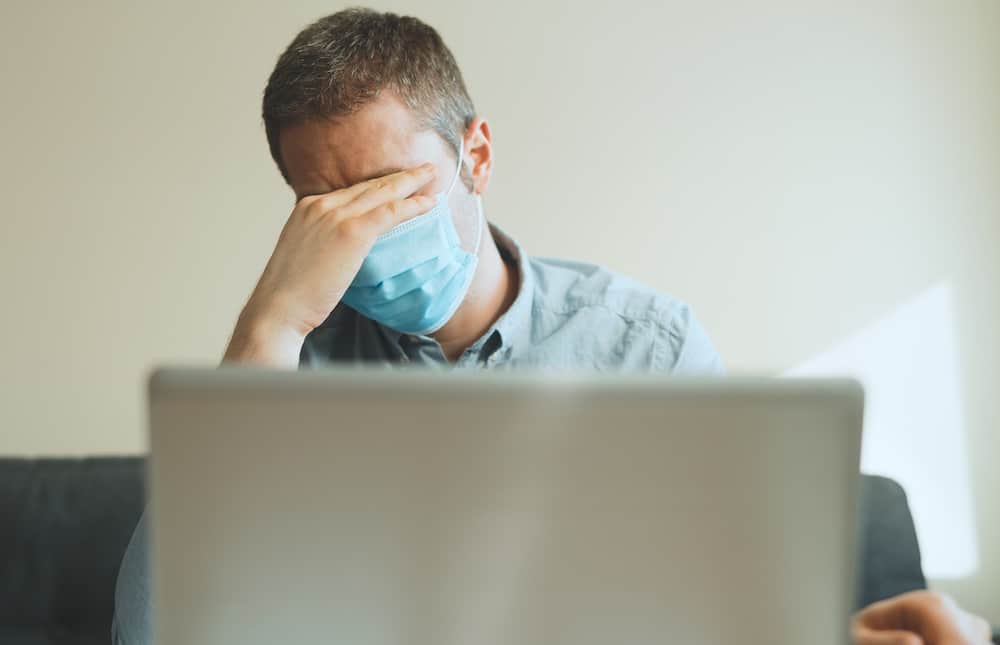
The Way COVID-19 Changed Mental Health And Addiction
Dayna Smith-Slade ❘
As years pass since the initial outbreak of COVID-19, we are left with increased substance abuse and mental health struggles.
Read More ⟶
Take the first step towards recovery

by Dayna Smith-Slade | ❘
In recent years, mental health has been a growing area of discussion; the beginnings of a global acceptance to what has previously been overlooked or pushed aside. Of particular concern, especially in America, is the state of children’s mental health.
While COVID-19 turned the world as we knew it upside down, data from the last several years shows that children’s mental health was already on a downward trend. US Surgeon General, Vivek Murthy, declared adolescent mental health a public concern stating, “Even before the pandemic, an alarming number of young people struggled with feelings of helplessness, depression, and thoughts of suicide — and rates have increased over the past decade.”
Recent studies show that the pandemic exacerbated this already growing mental health crisis in our youth. In response, many parents and school systems are taking a proactive approach to address these mental health concerns and ensure children are receiving adequate care and attention.
According to the Centers for Disease Control and Prevention (CDC), prior to the pandemic, mental health challenges were the leading cause of disability and poor life outcomes in young people. Roughly 1 in 5 children, aged 3 to 17 in the U.S. meet the criteria for a mental, emotional, developmental, or behavioral disorder.
Pre-COVID, teachers, guidance counselors, and school psychologists would identify changes in behavior or symptoms of mental distress and connect those kids to resources, acting as an observer and form of “first responder” who triages and refers.
That model proved challenging, however, when schools transitioned to a virtual learning environment. Within the first year of the pandemic, many children who developed symptoms related to their mental health did not receive help right away.
This gap in identification and referral occurred for many reasons. Resources were strained, school staff members were experiencing their own mental health concerns, and more students than not were experiencing mental unrest so it was deemed the “norm considering the circumstances.” In general, school administrators’ focus was on adjusting and adapting to this brand new way of teaching and learning, prioritizing curriculum and content in attempt to raise test scores as they were the lowest they’d been in 30 years.
Luckily, the nation was aware of the crisis and in March of 2021, President Biden passed The American Rescue Plan Act. The law included $170 billion in school funding, a large portion of which was allocated to address and uphold the mental health of students. Just over 6 months later, in October, the Biden administration and U.S. Department of Education released new guidance for schools to better help students’ mental health needs.
Despite the funding, resources, and guidance, however, in December 2021, the U.S. Surgeon General issued the Advisory on Protecting Youth Mental Health, a document which outlines the pandemic’s unprecedented impacts on the mental health of America’s youth and families. Additionally, it discusses the mental health challenges that existed before the pandemic (e.g. the shortage of child psychologists, school guidance counselors, and the disparities of access to school and community-based mental health care).
Especially in this moment, as we work to protect the health of Americans in the face of a new variant, we also need to focus on how we can emerge stronger on the other side. This advisory shows us how we can all work together to step up for our children during this dual crisis.
Since the onset of COVID-19, children and adolescents have experienced an upheaval of the very things that helped them to feel a sense of safety and security during important developmental stages of their lives.
Many of our youth have experienced unprecedented grief, loss, and hardship over the past several years. They’ve lost loved ones and caregivers, they’ve been isolated and disconnected from their peers and lost the ability to be completely carefree. They’ve had to worry about catching COVID-19 and had to learn to adapt to their new schooling environment. Many young people and their families witnessed financial insecurities and uncertainties regarding food and necessary household supplies like toilet paper. They have been exposed to images of social injustices, the insurrection of US Capitol, and heart wrenching gun violence in countless settings from malls to concert venues to churches and schools.
In the Fall of 2022, many children returned to a physical classroom bringing with them their experiences from the last few years and many other unseen stressors and traumas. Due to the increasing prevalence and threat of gun violence, students are not only faced with adjusting to new changes, new people and faces, new routines, and COVID-related precautions, but must also learn and adjust to active shooter safety protocols. All the while, many children are exhibiting developmentally delayed social skills and rusty time management and organizational skills.
Initially, school staff and administration thought that returning to school would create long-sought normalcy, yet soon discovered that children were experiencing mental health fallout and residue of the disruptions of the past nearly 3 years. In fact, in the 2021-22 academic year, 76% of US public schools reported increased concerns around students showing symptoms of anxiety, depression, and trauma, according to the National Center for Education Statistics.
Often, children and adolescents don’t always have the proper language or knowledge of how to articulate their emotions. Subsequently, signs of anxiety, stress, and depression mimic emotional and behavioral disorders that may present (in no particular order) in the following ways:
In October of 2021, the American Academy of Child and Adolescent Psychiatry declared the state of children’s mental health a national emergency. Across the nation emergency rooms have seen an alarming increase of self-injurious behavior and thoughts of suicide.
As we see in the news, suicide can seemingly come out of nowhere, so well hidden beneath the victim’s smile and happy demeanor. Families, school systems, and communities must be alert and aware of signs and symptoms of suicidal ideation and passive death wishes. Pediatricians and/or mental health professionals should screen all kids for mental health distress.

In July of this year, 988 was designated as the new three-digit dialing code that will route callers to the National Suicide Prevention Lifeline which is open and operating 24/7.
When people call or text 988, they will be connected to counsellors who are part of the existing Lifeline network. These mental health professionals are trained to listen with empathy, provide support, and connect the caller to resources if necessary. It is important to note that the previous Lifeline number (1-800-273-8255) will still (and always) remain operational and thus available to people in suicidal crisis.
During this continued transition to a new normal, we must remember many kids are feeling anxious and struggling to get back into routines. Now more than ever, we must embody the timeless adage: it takes a village. Families, school systems, and communities need to remain diligent and aware of the myriad of mental health challenges plaguing our nation’s young people and commit to providing the support and resources they require.
If you are worried about your child’s mental health, especially as we enter the holiday season, don’t hesitate to get help now. Learn more about online therapy options from the comfort of your own home and take the first step today.
Try Online Therapy

Get professional help from an addiction and mental health counselor from BetterHelp by phone, video, or live-chat.
Take the Quiz. Get Matched. Begin Therapy.

Online therapy can help you with long term addiction support. Connect with a therapist from Talkspace anytime, anywhere.
Get matched with a therapist now.

Begin making positive changes with Online-Therapy.com. Quality online therapy, from the comfort of home.
Answer a few questions to get started.
Paid Advertising. We may receive advertising fees if you follow links to promoted online therapy websites.
Published:
Dayna Smith-Slade

Dayna Smith-Slade is a nationally certified Master Addictions Counselor (MAC), licensed Substance Abuse Professional (SAP), and Substance Abuse Expert (SAE) with over 29 of hands-on experience in the addiction field.
Sources


Recovery Starts Today
Call Now For Addiction Support